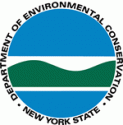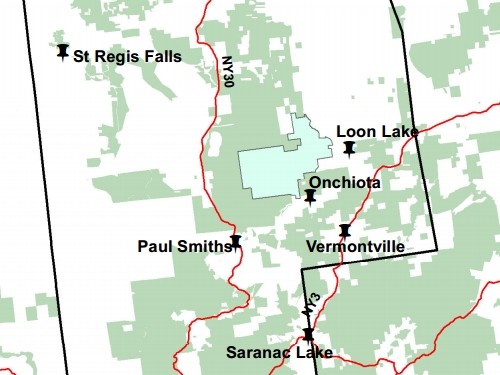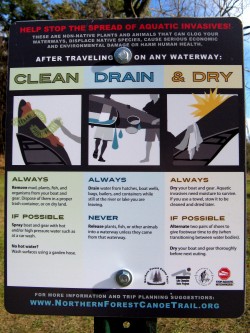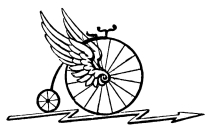Public Comments Accepted Through Feb. 21 – Public Meeting Scheduled on Feb. 5 at Paul Smiths College
 The Kushaqua Tract Conservation Easement Lands (Draft RMP) in the northern Adirondacks will increase public access for recreational use under a draft Recreational Management Plan released today for public review and comment, New York State Department of Environmental Conservation (DEC) Commissioner Joe Marten announced.
The Kushaqua Tract Conservation Easement Lands (Draft RMP) in the northern Adirondacks will increase public access for recreational use under a draft Recreational Management Plan released today for public review and comment, New York State Department of Environmental Conservation (DEC) Commissioner Joe Marten announced.
“The Draft Recreation Management Plan outlines a variety of recreational opportunities, including motorized recreation, on the Kushaqua Tract Conservation Easement Lands,” said Commissioner Martens. “Governor Cuomo is committed to encouraging people to enjoy New York’s outstanding natural resources, and the UMP for the Kushaqua Tract does that by creating additional opportunities for the public to enjoy this land. DEC worked cooperatively with private landowners and land managers to develop public access on these lands, while protecting natural resources and retaining timber management jobs.”
A public meeting will be held at 6:30 pm on Wednesday, Feb. 5 in the auditorium of the Freer Science Building at Paul Smiths College in the town of Brighton. The meeting will provide the public with an opportunity to learn more on the proposed management actions in the Draft RMP and to provide comment on the proposals. The meeting facility is wheelchair accessible. Please provide any requests for specific accommodations to 518-897-1291 at least one week in advance. DEC will accept comments on the Draft RMP until Friday, Feb. 21.
The Kushaqua Tract Conservation Easement Lands consist of approximately 19,000 acres of land in the towns of Franklin and Brighton in Franklin County formerly owned by International Paper Corporation. DEC purchased a working forest conservation easement on the lands in 2004 which includes development rights and sustainable forestry requirements. The easement also includes public access to more than 18,000 acres of the property and many miles of the existing road system.
The lands were purchased by Lyme Timber Company in 2006, which continues to actively manage the lands for timber. The company also leases 31 one-acre camp parcels on the property to private outdoor recreation enthusiasts.
DEC developed the Draft RMP to facilitate and manage public recreational use of the easement lands and complies with the terms and conditions of the easement. DEC consulted with the landowner and its forest management consulting firm in developing the proposed plan. In addition, DEC obtained input from a variety of stakeholders including local governments, snowmobile and ATV clubs, sportsmen and women, hikers and private lease club members.
The Draft RMP includes proposals to construct campsites and designated parking areas, construct new trails for motorized and non-motorized users, provide access for people with disabilities, enhance fishing access and the repair, upgrade and open to the public more than 38 miles of existing access roads for motorized and non-motorized uses including ATVs, snowmobiles and automobiles.
Proposed management actions include to:
- maintain and rehabilitate existing facilities (including brushing, raking, grading and rehabilitation of roads and bridges);
- designate one existing logging road as open for People with Disabilities under CP 3 permit;
- install informational, safety and boundary line signage;
- construct or upgrade seven trails intended for non-motorized use;
- construct five designated parking lots;
- upgrade and open for public access more than 38 miles of existing roads for both motorized and non-motorized uses including use by ATVs
- install a universally accessible dock to provide for an accessible fishing, paddling and boating on the Mountain Pond;
- construct 12 campsites; and
- construct and maintain gates and other barriers to prevent illegal motorized use on sections of roads that are not open to public use.
DEC will accept comments on the Draft RMP until Friday, Feb. 21. The Draft UMP is available for public review at DEC’s Region 5 headquarters in Ray Brook and at the town offices of Brighton and Franklin. Copies are available in electronic format for distribution on compact disc and may be requested by calling DEC at 518-897-1291. A limited number of printed copies are available as well. The complete document is available on DEC’s web site: Kushaqua Tract Draft Recreation Management Plan
Written comments may be sent to Sean Reynolds, Senior Forester, NYSDEC, P.O. Box 296, Ray Brook, NY 12977, or e-mailed until Friday, Feb. 21.






